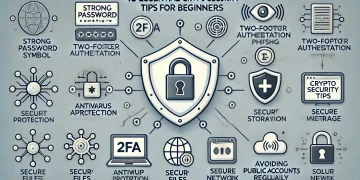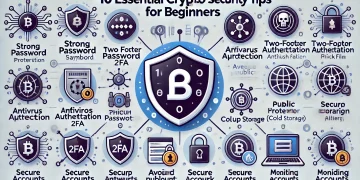The cryptocurrency market offers diverse trading approaches, with long-term and short-term strategies representing two fundamental philosophies. This comprehensive analysis explores both approaches, examining their advantages, disadvantages, and optimal implementation scenarios to help traders make informed decisions about their trading style.
Understanding Time Horizons
Long-term Trading (HODLing)
Long-term cryptocurrency trading, often referred to as “HODLing,” involves holding positions for extended periods, typically months to years. This approach focuses on fundamental analysis and macro trends rather than short-term price movements.
Short-term Trading
Short-term trading encompasses various strategies, including day trading, swing trading, and scalping. These approaches capitalize on market volatility and price movements occurring within shorter timeframes, from minutes to weeks.
Long-term Trading Analysis
Core Principles
Long-term trading is built on several fundamental principles that shape its implementation and success:
The underlying belief in cryptocurrency’s future value proposition drives long-term trading. HODLers typically maintain strong convictions about blockchain technology’s transformative potential and its growing adoption across industries.
Market cycles play a crucial role in long-term strategy. Understanding that cryptocurrencies move in multi-year cycles helps investors maintain perspective during volatile periods and make strategic entry and exit decisions.
Psychological Advantages
Long-term trading offers significant psychological benefits:
The reduced need for constant market monitoring decreases stress and emotional decision-making. Traders can maintain regular employment and personal activities without constant market attention.
Long-term holders often develop stronger conviction through market research and understanding, making it easier to weather market volatility and avoid panic selling.
Financial Benefits
The financial aspects of long-term trading present several advantages:
Lower transaction costs result from reduced trading frequency. This includes both direct costs (fees) and indirect costs (spreads, slippage).
Tax advantages often favor long-term holders, with many jurisdictions offering preferential tax rates for assets held beyond certain timeframes.
Compound growth potential increases with time, allowing investors to benefit from the overall market expansion and adoption.
Challenges and Risks
Long-term trading isn’t without its challenges:
Opportunity costs can be significant during extended bear markets or when capital is locked in underperforming assets.
Psychological challenges emerge during severe market downturns, testing even the strongest conviction.
Regulatory changes pose long-term risks as the cryptocurrency landscape evolves.
Short-term Trading Analysis
Strategic Approaches
Short-term trading encompasses various strategies:
Day trading involves opening and closing positions within the same trading day, capitalizing on intraday price movements.
Swing trading captures price movements over several days to weeks, taking advantage of market trends and reversals.
Scalping focuses on profiting from minimal price movements through high-frequency trading.
Technical Requirements
Short-term trading demands specific technical capabilities:
Advanced charting tools and technical analysis skills are essential for identifying trading opportunities.
Real-time market data and efficient execution platforms ensure timely trades.
Risk management systems help protect capital during rapid market movements.
Profit Potential
Short-term trading offers unique profit opportunities:
Multiple profit opportunities arise daily through market volatility.
Leverage can amplify returns when used judiciously.
Market-neutral strategies allow profit potential in both bullish and bearish conditions.
Risk Factors
Short-term trading carries significant risks:
Higher stress levels result from constant market monitoring and quick decision-making.
Transaction costs accumulate rapidly with frequent trading.
Emotional trading can lead to impulsive decisions and losses.
Strategy Comparison
Capital Requirements
Long-term Trading:
- Lower initial capital possible
- Fewer transaction costs
- Less need for trading tools and subscriptions
Short-term Trading:
- Higher capital recommended for meaningful returns
- Additional costs for trading tools and data
- Buffer needed for market volatility
Time Commitment
Long-term Trading:
- Periodic market research
- Less frequent portfolio rebalancing
- Flexible time management
Short-term Trading:
- Constant market monitoring
- Regular technical analysis
- Immediate decision-making required
Skill Requirements
Long-term Trading:
- Fundamental analysis expertise
- Market cycle understanding
- Strong research capabilities
Short-term Trading:
- Technical analysis proficiency
- Pattern recognition skills
- Quick decision-making ability
Market Conditions Analysis
Bull Markets
Long-term Trading:
- Benefits from overall market growth
- Reduced stress during volatile upswings
- Lower risk of missing major moves
Short-term Trading:
- Multiple profit opportunities
- Trend-following potential
- Higher leverage potential
Bear Markets
Long-term Trading:
- Requires strong conviction
- Opportunity for accumulation
- Position averaging possibilities
Short-term Trading:
- Profit potential from downward moves
- Requires adapted strategies
- Higher risk of losses
Risk Management
Position Sizing
Long-term Trading:
- Portfolio percentage allocation
- Dollar-cost averaging
- Strategic reserve management
Short-term Trading:
- Risk per trade limits
- Stop-loss implementation
- Leverage management
Diversification
Long-term Trading:
- Asset class diversification
- Project type variation
- Geographic distribution
Short-term Trading:
- Strategy diversification
- Timeframe variation
- Market correlation analysis
Frequently Asked Questions
Q: Which trading style is better for beginners? A: Long-term trading generally suits beginners better due to lower time requirements and reduced emotional stress.
Q: How much capital should I start with? A: Starting capital depends on your chosen strategy. Long-term trading can start with smaller amounts, while short-term trading benefits from larger capital bases.
Q: Can I combine both strategies? A: Yes, many successful traders maintain a core long-term portfolio while actively trading with a portion of their capital.
Q: How important is market timing? A: Market timing is crucial for short-term trading but less critical for long-term strategies focused on fundamental value.
Q: What tools do I need? A: Long-term trading requires basic market analysis tools, while short-term trading demands more sophisticated charting and execution platforms.
Q: How do taxes affect each strategy? A: Tax implications vary by jurisdiction but generally favor long-term holding periods over frequent trading.
Q: What’s the biggest risk in each approach? A: Long-term trading risks include missed opportunities and regulatory changes, while short-term trading risks include emotional decision-making and higher transaction costs.
Q: How do I choose between strategies? A: Consider your time availability, risk tolerance, technical expertise, and investment goals when selecting a trading strategy.
Conclusion
The choice between long-term and short-term crypto trading depends on individual circumstances, including time availability, risk tolerance, and trading expertise. Long-term trading offers reduced stress and potentially lower risks but requires patience and strong conviction. Short-term trading provides more frequent profit opportunities but demands greater skill, time commitment, and emotional control.
Successful traders often develop a hybrid approach, maintaining core long-term positions while selectively engaging in short-term opportunities. Regardless of the chosen strategy, proper risk management, continuous education, and disciplined execution remain essential for trading success in the cryptocurrency market.
Understanding your personal trading style, goals, and limitations helps determine the most suitable approach. Regular strategy review and adaptation to changing market conditions ensure long-term sustainability in cryptocurrency trading.






























